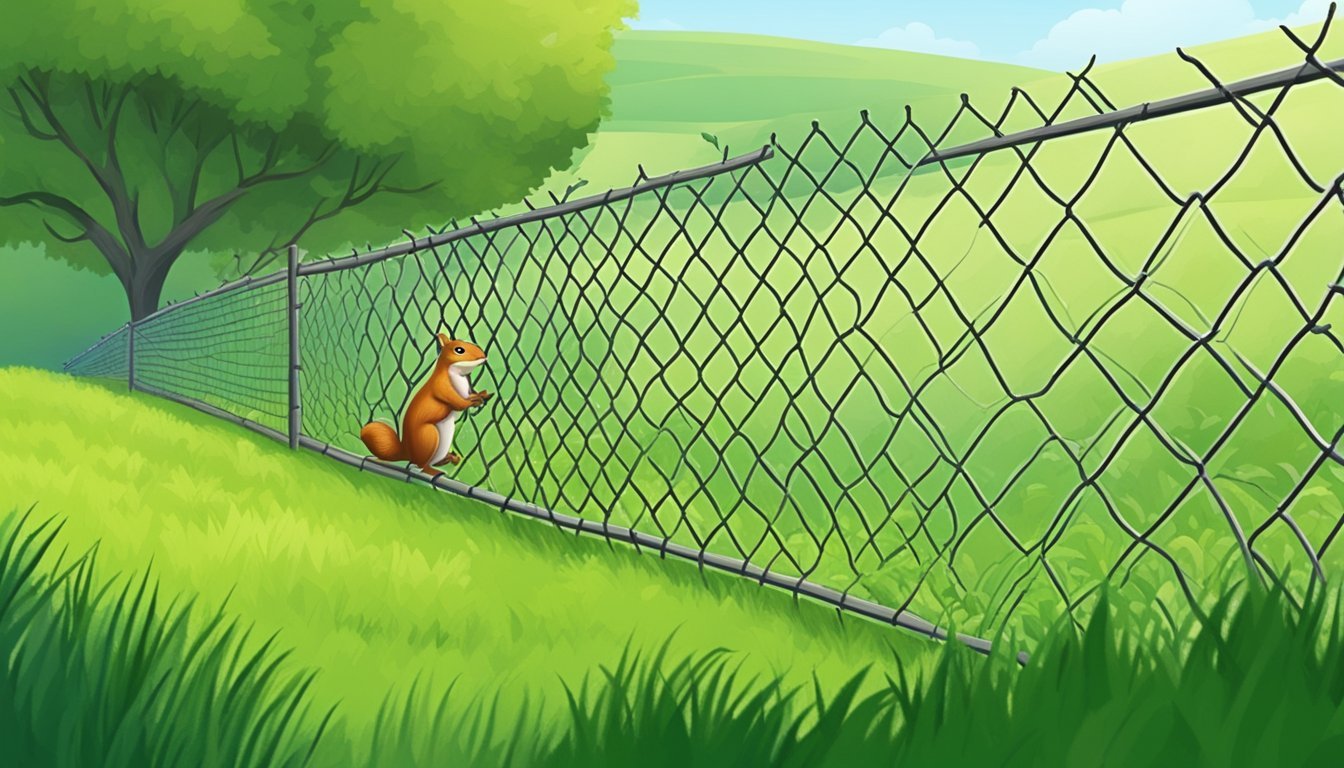Protecting Crops from Red Squirrels
Effective Strategies for Farmers
Gardeners and farmers often face the challenge of protecting their crops from various wildlife, with red squirrels being among the more adorable yet problematic culprits. Particularly within the UK, where conservation efforts have led to an increasing awareness of red squirrel populations, the need to balance wildlife protection with agricultural success is paramount. Red squirrels, known for their distinctive russet fur and bushy tails, can cause significant damage to gardens and crops, as they forage for food and materials to build their dreys.
Implementing effective strategies to safeguard crops is essential to minimize the impact of these nimble creatures. As red squirrels are an endangered species in the UK, it is crucial to employ non-lethal methods that deter them from causing harm while respecting their place in the ecosystem. Understanding the behavior of red squirrels is the first step in developing measures that protect plants without infringing on the well-being of this cherished species.
Red Squirrel Overview
The red squirrel, a native species treasured for its ecological importance, faces multiple challenges that necessitate concerted conservation efforts. This section explores the red squirrel from various facets of its existence and the ongoing efforts to conserve this cherished woodland inhabitant.
Species and Conservation Status
The red squirrel (Sciurus vulgaris) is indigenous to the UK and other parts of Europe. It is classified as a protected species in the UK, with conservation status reflecting its vulnerability and decline in population numbers.
Habitat and Distribution
Red squirrels are primarily found in coniferous woodlands, but they also inhabit mixed woodlands that include both conifer and native broadleaf species. Scotland remains a stronghold for the species, alongside pockets of populations in northern England and Wales.
Biology and Behaviour
The species is known for its agility and active behaviour, especially during the dawn and dusk. Red squirrels build nests, known as 'dreys', typically in the forks of tree branches.
Diet and Feeding Habits
Red squirrels primarily feed on seeds, including hazelnuts, but their diet is diverse, encompassing nuts, fungi, fruits, and even bark. Feeding stations are sometimes used to supplement their natural food sources.
Threats to Red Squirrels
Numerous challenges face red squirrels, including the loss of native woodlands, competition from grey squirrels, and diseases such as the squirrelpox virus. Habitat loss and climate change are other significant threats.
Interactions with Grey Squirrels
Grey squirrels, introduced from North America, outcompete red squirrels for resources and carry the squirrelpox virus, which is lethal to reds but harmless to greys. The reduction of the grey squirrel population is an essential part of conservation strategies.
Conservation and Management
Conservation management involves protecting and managing woodland habitats to favor the red over the grey squirrel. This includes the promotion of native broadleaf and coniferous woodlands.
Research and Monitoring
Continuous research is conducted to inform conservation efforts, including studies published in journals such as Proceedings of the Royal Society B. The use of camera traps and public participation in monitoring contributes valuable data.
Human Influence and Urban Interaction
Red squirrels in urban settings interact with humans, often venturing into gardens. This interaction introduces challenges but also opportunities for public awareness and involvement in conservation. Landowner collaboration is crucial in effective habitat management.
Supporting Red Squirrel Populations
National and community-based initiatives, such as Saving Scotland's Red Squirrels and habitat management strategies, play a substantial role in supporting and increasing red squirrel populations. Public involvement is encouraged through participation in monitoring and reporting sightings.
Frequently Asked Questions
The following section addresses key concerns for individuals seeking to protect their crops from the incursions of red squirrels. It provides targeted advice on deterrence, crop protection methods, and humane control measures.
How can I deter red squirrels from my garden?
Deterring red squirrels can involve the use of specially designed traps such as cage traps, ensuring that the mesh is small enough to prevent escape. These can be baited with food to entice the squirrels. Habitat modification, such as removing access to bird feeders, can also reduce their presence.
What are effective methods for safeguarding vegetables from squirrel damage?
Protecting vegetables can be achieved through physical barriers like wire mesh or netting installed around gardens. It's crucial to bury these barriers deep enough to prevent squirrels from digging underneath.
Which plants are known to naturally repel squirrels and chipmunks?
Certain plants, such as daffodils and alliums, are unappealing to squirrels and chipmunks due to their taste and smell. Interspersing these plants among your crops can act as a natural deterrent.
Are there specific times of day when squirrels are more likely to damage crops?
Squirrels are primarily active during the early morning and late afternoon. Therefore, these periods are when crops are most at risk and when deterrent measures should be most vigilant.
What are some safe and humane options for protecting crops from squirrels?
Utilizing humane options such as motion-activated sprinklers or ultrasonic repellents can deter squirrels without causing them harm. Consistent reapplication of deterrents after rain or heavy watering is essential for effectiveness.
How do I prevent red squirrels from eating the fruits in my orchard?
To prevent red squirrels from reaching the fruits, it's advised to place baffle devices on the trunks of fruit trees to hinder their climbing. Regular inspection and maintenance of these devices are necessary to ensure they remain effective.



